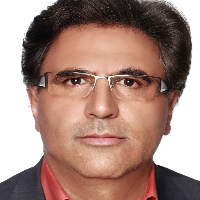The Application of the Discourse of Silence in Surah Yusuf (AS)
Silence as a communicative action plays a crucial role in different discourses. It is the foundation of language, thinking, and cognition. Silence is the complement to speech and even beyond that. Absent elements have a meaningful presence in the discourse, and highly impress the audience and encourage them to start thinking. The Holy Qur’an, as a rhetorical and literary work, consists of numerous absent and silent elements that incite researchers to discover any new rhetorical hinters by exploring the divine ayahs. In the current study, a descriptive-analytic method was employed to analyze Surah Yusuf at three structural, semantic, and cognitive-pragmatic levels, based on the theory of narrative silence discourse. The study aimed to present a clear answer to the question of silence and its impact in polysemy and in the reading of Surah Yusuf. The findings show that this surah contains three types of silence, indicating the structural and semantic coherence of the divine ayahs of the Qur’an. While condensing the speech, creating plot tension, and delaying the meaning, structural silence provides illustrations, and creates a more tangible atmosphere. The frequent pragmatic silence confirms the purity and innocence of Yusuf. Filling the current gaps with the help of readers' background knowledge, as well as the context, facilitates the esoteric interpretation of the meanings and makes provisions conducive for various interpretations of the divine ayahs.
-
A Pragmatic Approach to Rhetorical Technique of "Exaggeration" Based on Grice’s "Cooperative Principle"
Hassan Rahmani, *, Mohammad Jorfi, Ebrahim Anari Bozchlooi, Mahmoud Shahbazi
Literary Arts, -
Critique of Allameh Jafari’s Translation of the First Five Sermons of Nahj al-Balagha Based on Antoine Berman’s Translation Theory
Kobra Rahiminokani, Ghasem Mokhtari*, Mohammad Jarfi, Mahmoud Shahbazi
Journal of Islamic Knowledge and Insight,



